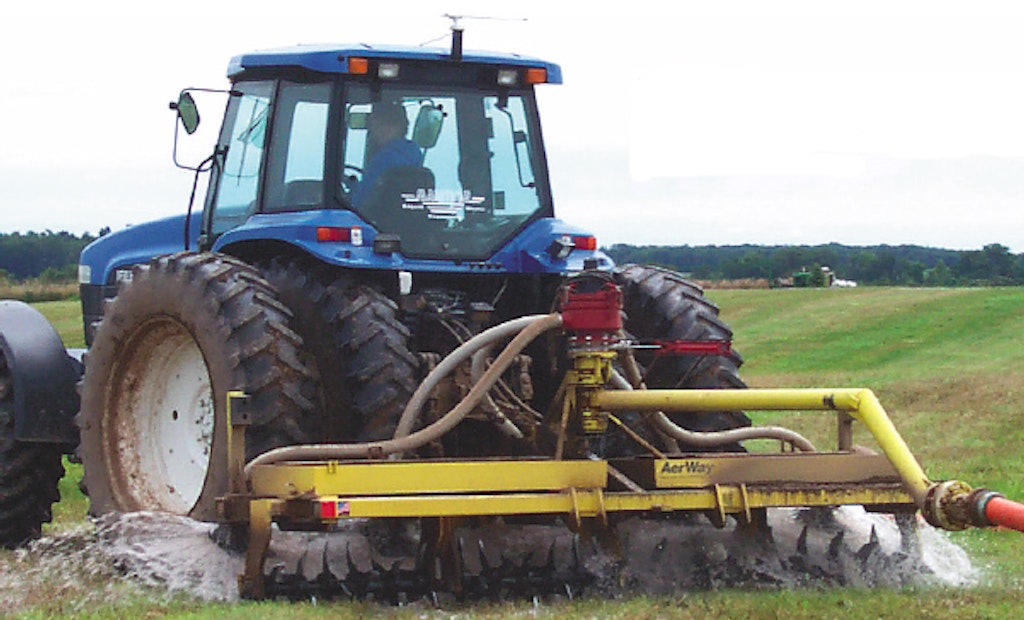Interested in Education/Training?
Get Education/Training articles, news and videos right in your inbox! Sign up now.
Education/Training + Get AlertsDave Gustafson knows firsthand how puzzling the regulations regarding the land application of biosolids can be. Gustafson, an educator with the University of Minnesota Extension onsite wastewater treatment education program, fields questions often from pumpers wanting to know just what they can and cannot do.
Biosolids are the organic solid product produced by wastewater treatment processes that can be recycled by applying it to land to condition the soil or fertilize crops or other vegetation. Nearly half of all biosolids are used in this way, with the remainder incinerated or held in surface storage units, according to the Environmental Protection Agency.
The EPA, under its Part 503 Biosolids Rule, spells out all the regulations, but they can be hard to digest, Gustafson says.
“It is confusing and the rules apply everywhere,” says Gustafson, who is also a National Association of Wastewater Technicians instructor. “A critical piece of the process is recordkeeping, including documenting standard operating procedures. Pumpers need to have them written down so when they’re asked about their procedures, the answers are consistent, clear and concise.”
Rules govern where and how the biosolids are spread, most often on farm fields. In addition, the biosolids applied to the land must meet risk-based pollutant levels. If there are any pollutants, such as chromium, arsenic, lead and others, in the biosolids, pumpers need to make sure their application level stays below the specified amount so the soil does not become oversaturated. Gustafson says pumpers should refer to rules posted online for just what those numbers are.
Pumpers need protocols in place for how to deal with any pathogens in the biosolids mixture. They also need plans for how to keep flies, mosquitoes and other disease-carrying insects (also known as vectors) away from the site.
Gustafson knows the rules and requirements aren’t always easy to understand. His best advice to pumpers is to think through their entire spreading process – what they do and when – and then commit it to paper. The next step is making sure everyone involved in biosolids spreading knows the steps and follows them.
“The people I see get into trouble are the ones who are inconsistent with answers when they are asked questions about what they are doing,” he says. “If they are written down, you’ll be able to look at it and give the same answer every time.”
Gustafson advises pumpers have written procedures in place for the following areas:
- How much biosolids can be applied to the land
- How to treat any pathogens present in the biosolids
- How to treat vectors (those pesky insects)
“Write down step-by-step what the guys need to be doing,” he says. “The people on top of this issue have already gone through and done all of this. They aren’t waiting until someone comes and yells at them to get a plan into place. I’ve also found there’s a difference between a businessman who isn’t stressing about paperwork and a guy who just wants to drive a truck and not deal with any paperwork. You need to deal with the paperwork.”
That includes sending in an annual report to the EPA – if your organization is publicly owned – that records where you spread and how much was spread. Pumpers who contract with publicly owned agencies should discuss with them who will handle the report responsibilities.
While the EPA rules are in effect everywhere, states do have the authority to add more regulations and requirements when it comes to biosolids application. Check with your state’s Department of Natural Resources if you’re unsure about additional rules.
“Pumpers need to evaluate the quality of their sludge, maintain their records and submit the necessary reports,” Gustafson says. “Those are all keys to success.”
Gustafson says one of the biggest challenges facing pumpers is the response to what they do.
“The public perception on this is very negative. In general, land application is tougher because of the neighbor response. The Internet can be friend or foe – people go out there and find all this stuff about it – which may not all be true – and then make it harder to get the job done,” he says. “Pumpers – who are also businessmen – know they need to get out there and communicate about what they are doing.”






